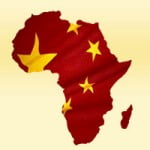China is getting geared to release an aggressive five-year plan for energy conservation in the next two weeks, and the scheme could have an impact on African renewable energy markets. With oil markets in flux reaching their highest level in more than two years, the Asian superpower is viewing their rising oil demand as a national security issue.
China is the second largest oil consumer behind the US, but oil major BP released a report that revealed that the country will overtake the US in the next 20 years increasing its consumption to 17.5 million barrels per day. The country’s oil consumption growth accounted for about a third of the world in 2009, according to the US Energy Information Administration (EIA). Although only second to the US in oil consumption, China remains the world’s largest consumer of energy and largest emitter of greenhouse gases.
In recent years the country has substantially upped its renewable energy sector. Consultant New Energy Finance said that Chinese wind investments in 2009 pushed the country past North America in clean energy investments with $37.3 billion compared to North America’s $32 billion. The biggest threat to China is North America’s venture capital and private equity investments; however, China’s financial institutions – mostly owned by the government – have implemented tools to help build locally-based start-up companies seeking to get in on the renewable energy action.
And China encourages those companies to partake in the hunt for African renewable energy sources particularly with the establishment of the China-Africa Development Fund (CADFund), created in June 2007. It boasts of being the first equity investment fund in China solely focusing on African investments as part of the government’s alliance, the Sino-African New Strategic Partnership. The initial funding for the program was $1 billion for the first phase and came from China Development Bank, who already maintained many on-the-ground teams in Africa to better understand the continent’s project development and investment management.
China said that its main priority sectors in Africa included renewable energy and finance with the country injecting $9.3 billion into the continent in 2009. An analysis from Frost & Sullivan released in October said that the next five years could see a substantial growth in Asian investments for the sub-Saharan energy market – which corresponds to China’s new five-year energy plan which has the country set to invest about $300 billion in seven key industry sectors. It isn’t farfetched to believe that renewable energy and Africa are included as China hopes to rely on market incentives like feed-in tariffs, carbon taxes, and other subsidies to drive investments.
The Asian country has been touting its ventures into the Africa continent, and trumped the West by becoming South Africa’s largest trading partner in 2009, according to South Africa’s Department of Trade and Industry (DTI). Angola accounts for 24% of China-Africa trade, South Africa follows with 17%, Sudan 8%, Nigeria 7%, and Egypt 6%, these five countries alone receive a combined 62% of China’s overall trade with Africa. Seychelles Minister of Foreign Affairs Jean-Paul Adam said at the UN’s 65th session, “We believe that China and Africa have an ideal opportunity to work together to set an example for the world on best practices eco-friendly technology transfer, to enhance the development of renewable energy.”
China’s ExIm Bank and the Development Bank of Southern Africa (DBSA) financed Zambia’s state-owned power utility Zesco Ltd. for the Kariba North Bank hydropower station. Zambia also signed an agreement with two Chinese firms to build the 600 MW Kafue Gorge Lower hydropower plant with construction expected to begin in April.
China’s ExIm bank also announced that it will provide Kenya with a Sh7.5-billion loan on concessional terms to fund the drilling of production wells at a planned 140 MW geothermal plant in the Rift Valley.
These investments pave the way for better relations between private sector African and Chinese companies to create joint ventures for new projects or just to pave the way for new companies to enter the African markets like China Wind Power (CWP). A representative from CWP attended the Wind Power Development & Implementation conference held in Cairo from December 13-14, and said that the company was looking into Africa and the Middle East’s wind market. In addition, Yingli Green Energy became the first Chinese company to sponsor the FIFA World Cup in South Africa with the company providing solar panels on all 20 of FIFA’s “Centers for 2010.”
As renewable energy companies in China expand with the help of government incentives and regulations, so do their investments and Africa seems to be the top choice for many Chinese investors.
Alternative Energy Africa is trying to reduce its own carbon footprint in 2011. Ask about our electronic subscriptions and online marketing campaigns specially tailored for individual companies.

